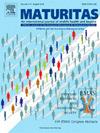终生雌激素暴露的全基因组关联研究在东亚绝经后妇女中发现了新的位点和多基因信号
IF 3.6
2区 医学
Q2 GERIATRICS & GERONTOLOGY
引用次数: 0
摘要
目的雌激素暴露是妇女生殖健康和衰老的主要指标。我们试图确定影响东亚女性终生雌激素暴露的遗传因素。方法:我们对来自韩国基因组和流行病学研究的21,724名绝经后妇女进行了一项全基因组关联研究(GWAS),以估计终生雌激素暴露(ELEE)。在三个独立的亚队列中分别分析调整了调查年龄和母乳喂养状况的线性回归模型,然后通过荟萃分析将汇总统计数据结合起来。结果基于GWAS,我们鉴定出10个与ELEE相关的单核苷酸多态性(SNP),其中包括一个新的SNP rs9992072。3号染色体上的rs13438位点与ELEE的相关性最显著(H1-10, β(标准误差)= 0.4705 (0.06),P = 4.09 × 10−17)。多基因风险评分(PRS)增加一个标准差与0.44年的ELEE增加相关。此外,PRS与乳腺癌和糖尿病相关(P <;0.05)。进一步的功能分析证实,与雌激素相关的遗传因素在多种生理过程中发挥作用,包括免疫功能和癌症发展。我们发现了一个新的遗传位点,并建立了东亚女性ELEE的PRS。结论本研究结果有助于解释终生雌激素暴露,从而有助于疾病的预防。本文章由计算机程序翻译,如有差异,请以英文原文为准。
A genome-wide association study for lifetime estrogen exposure identifies novel loci and polygenic signals in East Asian postmenopausal women
Objective
Estrogen exposure is the principal indicator of reproductive health and aging in women. We sought to identify what genetic factors affected lifetime estrogen exposure in a population of East Asian women.
Methods
We conducted a genome-wide association study (GWAS) on estimated lifetime estrogen exposure (ELEE) in 21,724 postmenopausal women from the Korean Genome and Epidemiology Study. A linear regression model adjusted for age at survey and breastfeeding status was analyzed separately in three independent subcohorts, and summary statistics were then combined via a meta-analysis.
Results
Based on GWAS, we identified 10 single-nucleotide polymorphisms (SNPs) associated with ELEE, including one novel SNP, rs9992072. The most significant association with ELEE was for rs13438 on chromosome 3 (H1–10, beta (standard error) = 0.4705 (0.06), P = 4.09 × 10−17). An increase in polygenic risk score (PRS) by one standard deviation was associated with a 0.44-year increase in ELEE. Additionally, the PRS was associated with breast cancer and diabetes (P < 0.05). Further functional analyses confirmed that genetic factors related to estrogen play roles in several physiological processes, including immune function and cancer development. We found a novel genetic locus and developed a PRS for ELEE in East Asian women.
Conclusion
The results of this study could help to explain lifetime estrogen exposure and thereby to aid disease prevention.
求助全文
通过发布文献求助,成功后即可免费获取论文全文。
去求助
来源期刊

Maturitas
医学-妇产科学
CiteScore
9.10
自引率
2.00%
发文量
142
审稿时长
40 days
期刊介绍:
Maturitas is an international multidisciplinary peer reviewed scientific journal of midlife health and beyond publishing original research, reviews, consensus statements and guidelines, and mini-reviews. The journal provides a forum for all aspects of postreproductive health in both genders ranging from basic science to health and social care.
Topic areas include:• Aging• Alternative and Complementary medicines• Arthritis and Bone Health• Cancer• Cardiovascular Health• Cognitive and Physical Functioning• Epidemiology, health and social care• Gynecology/ Reproductive Endocrinology• Nutrition/ Obesity Diabetes/ Metabolic Syndrome• Menopause, Ovarian Aging• Mental Health• Pharmacology• Sexuality• Quality of Life
 求助内容:
求助内容: 应助结果提醒方式:
应助结果提醒方式:


